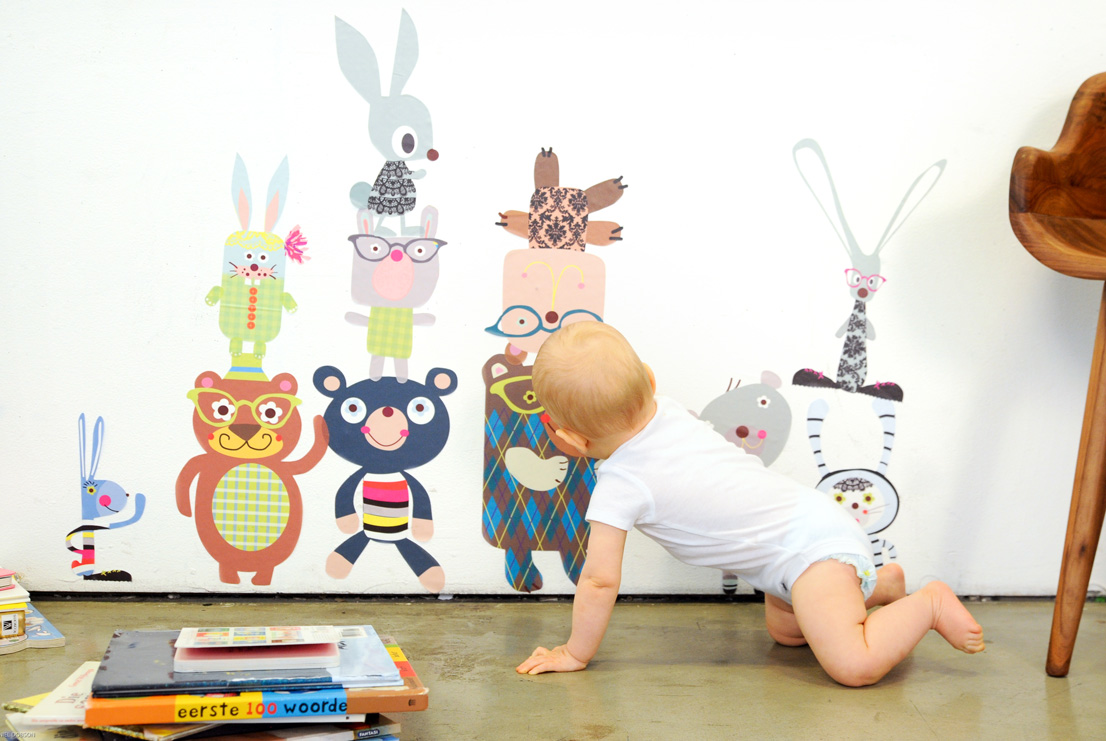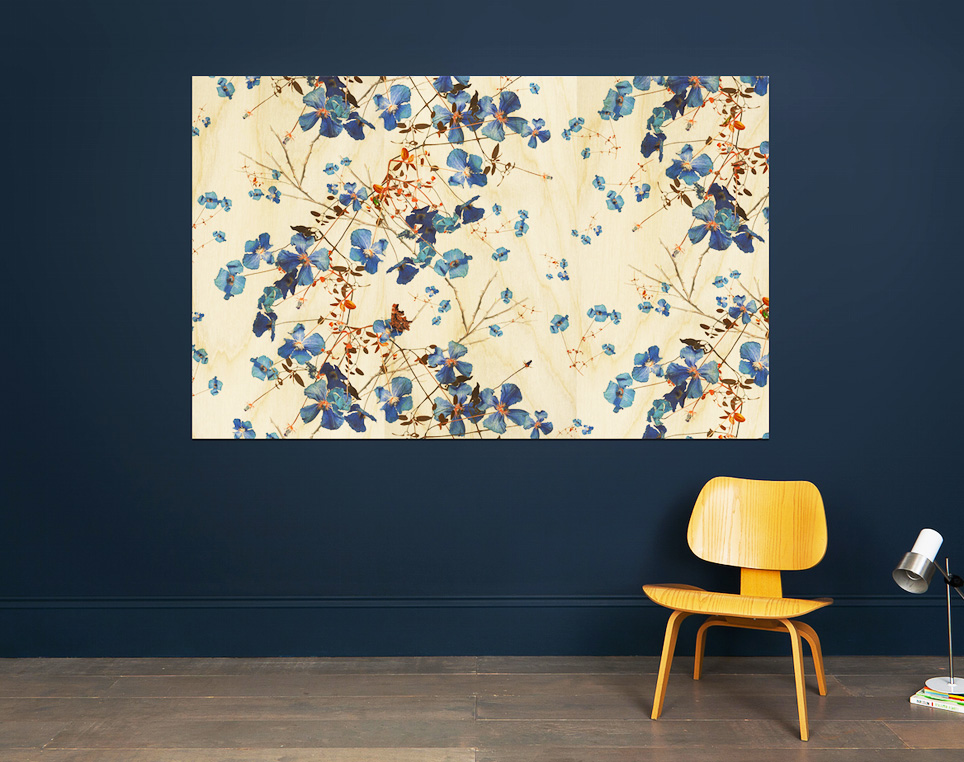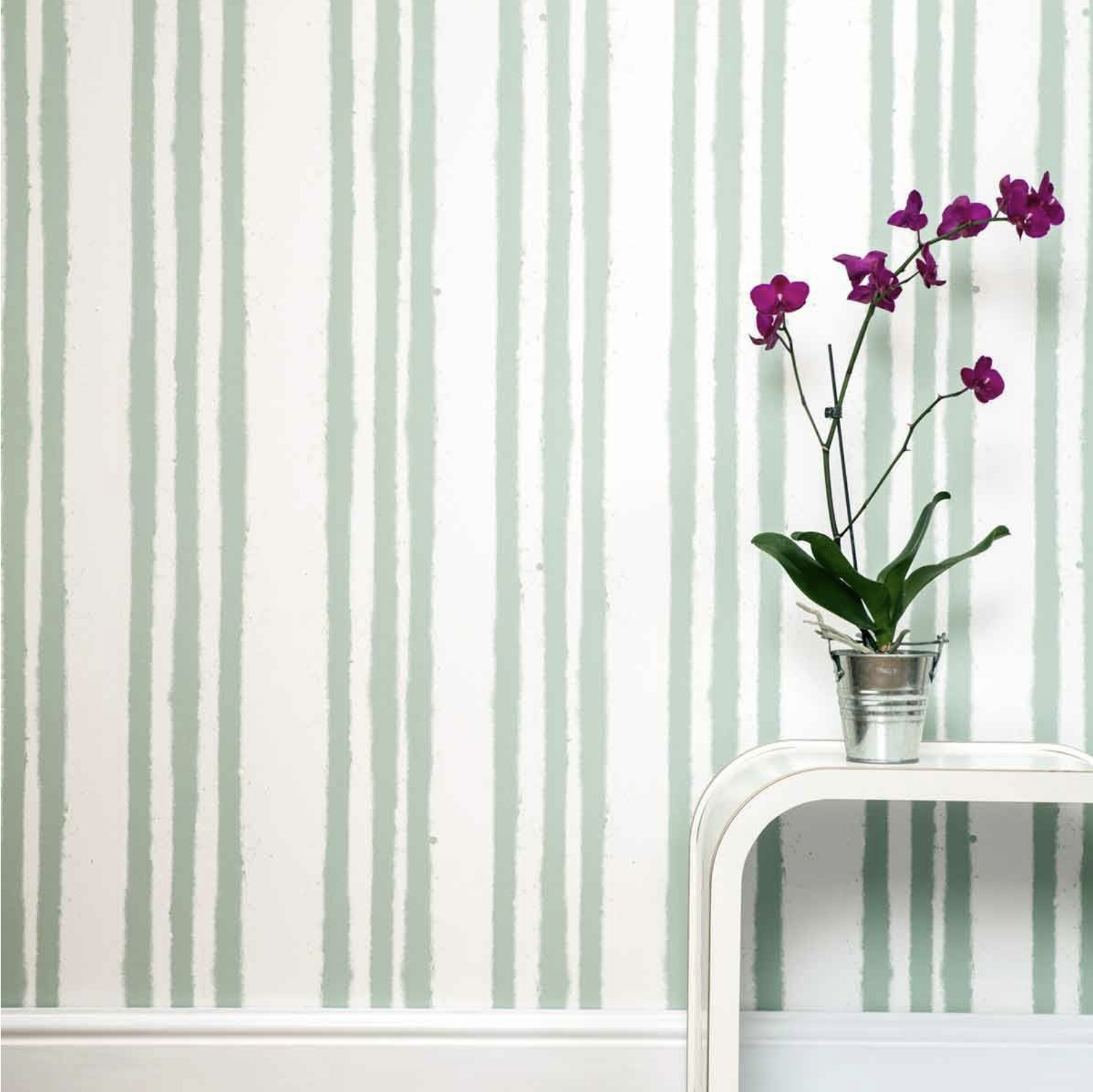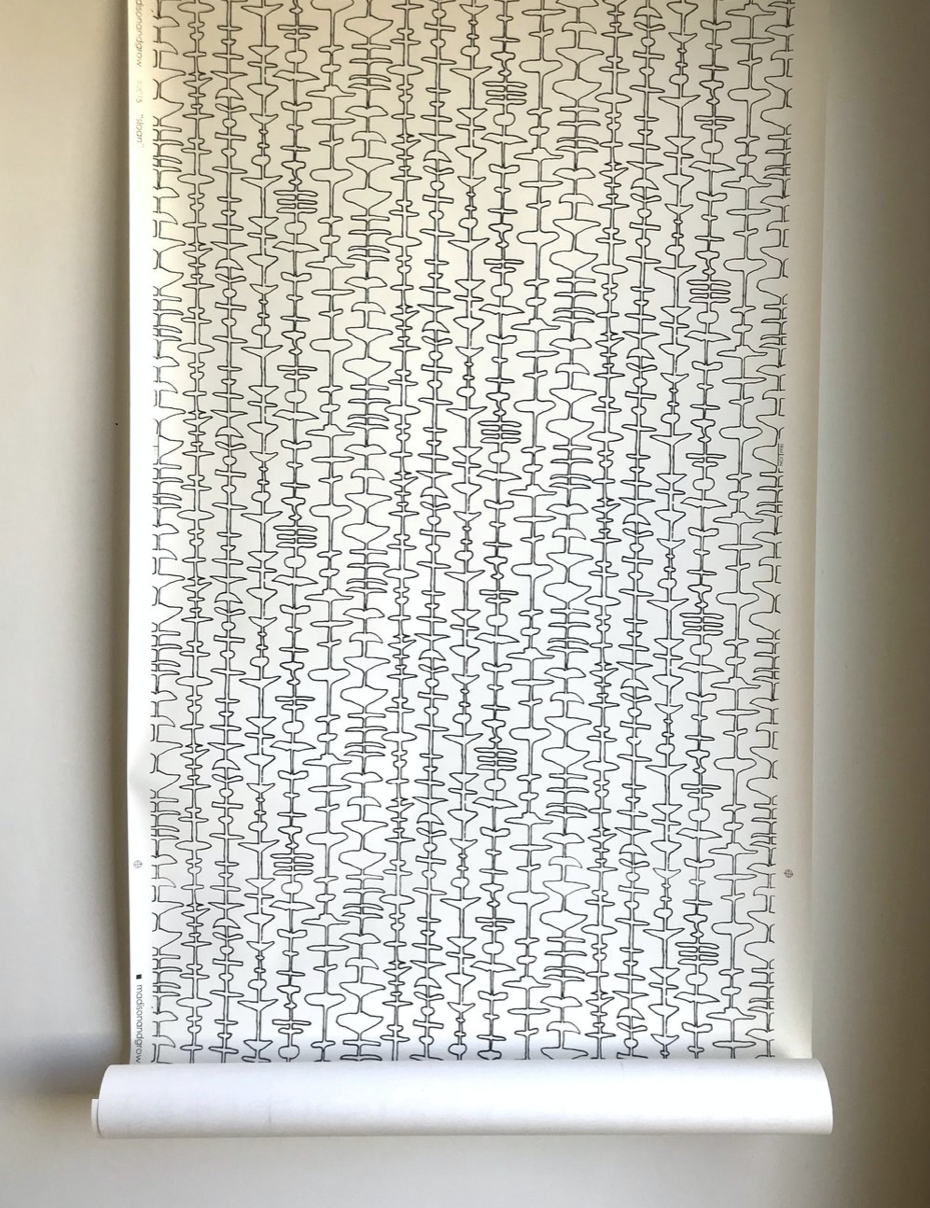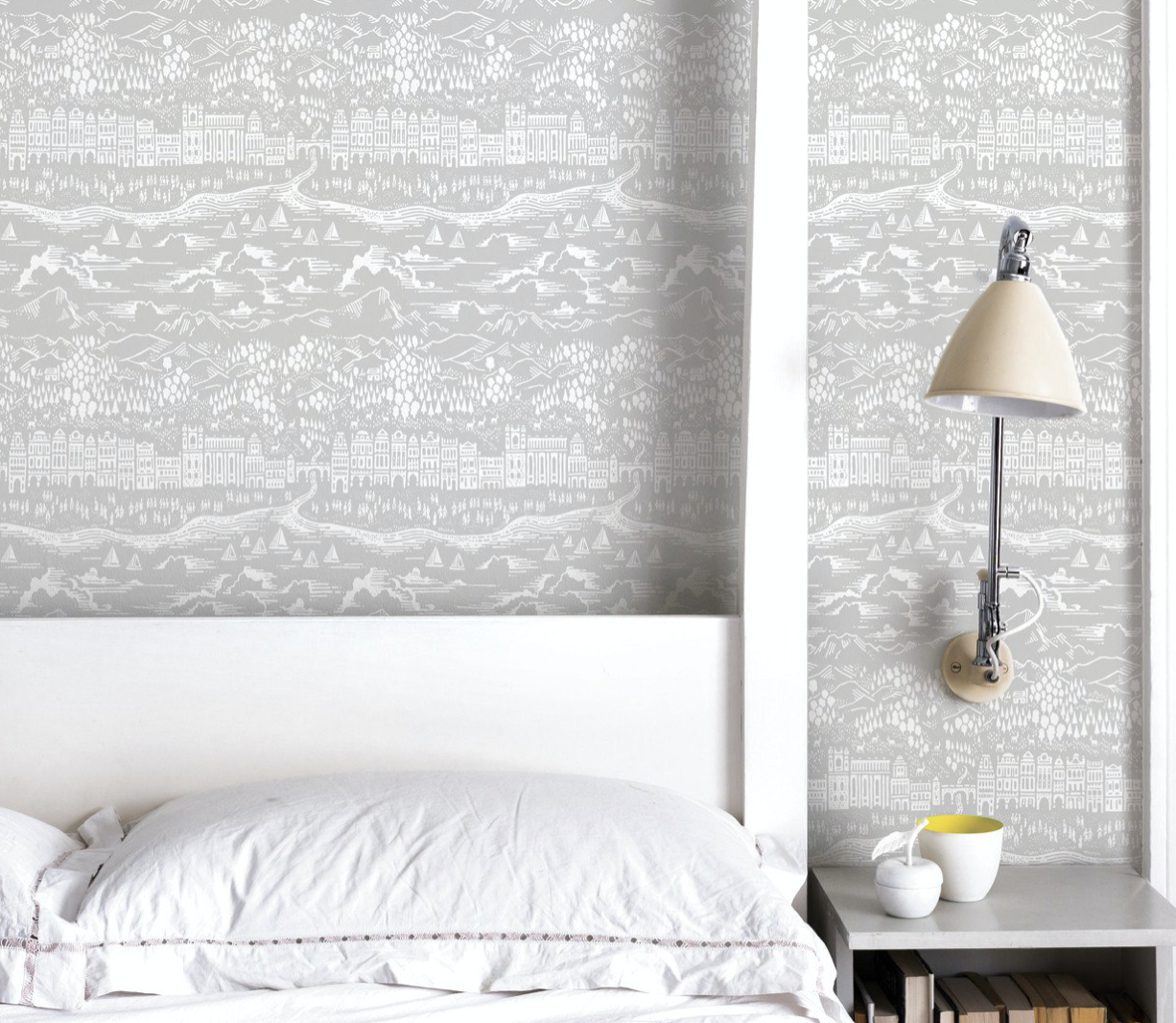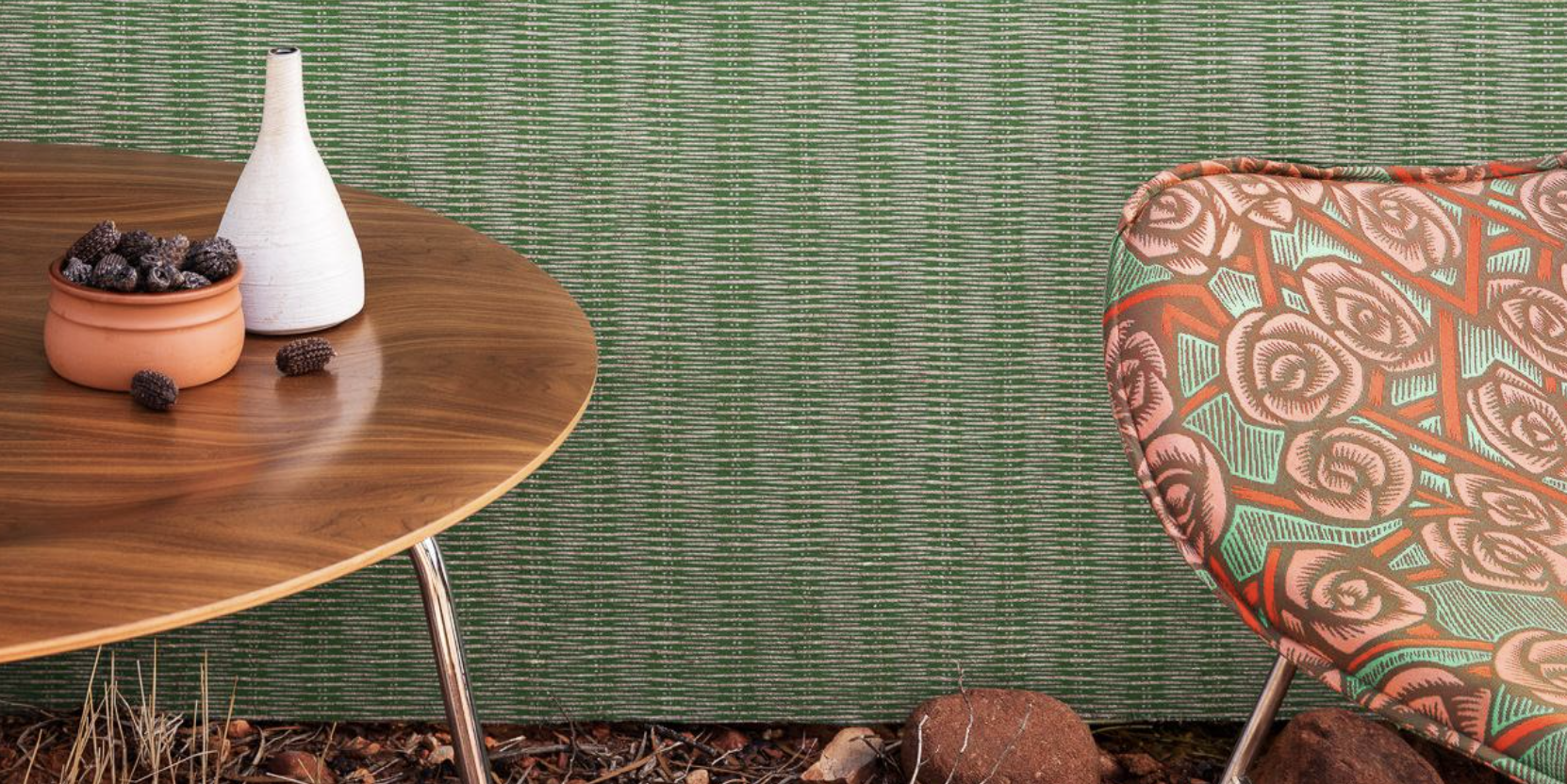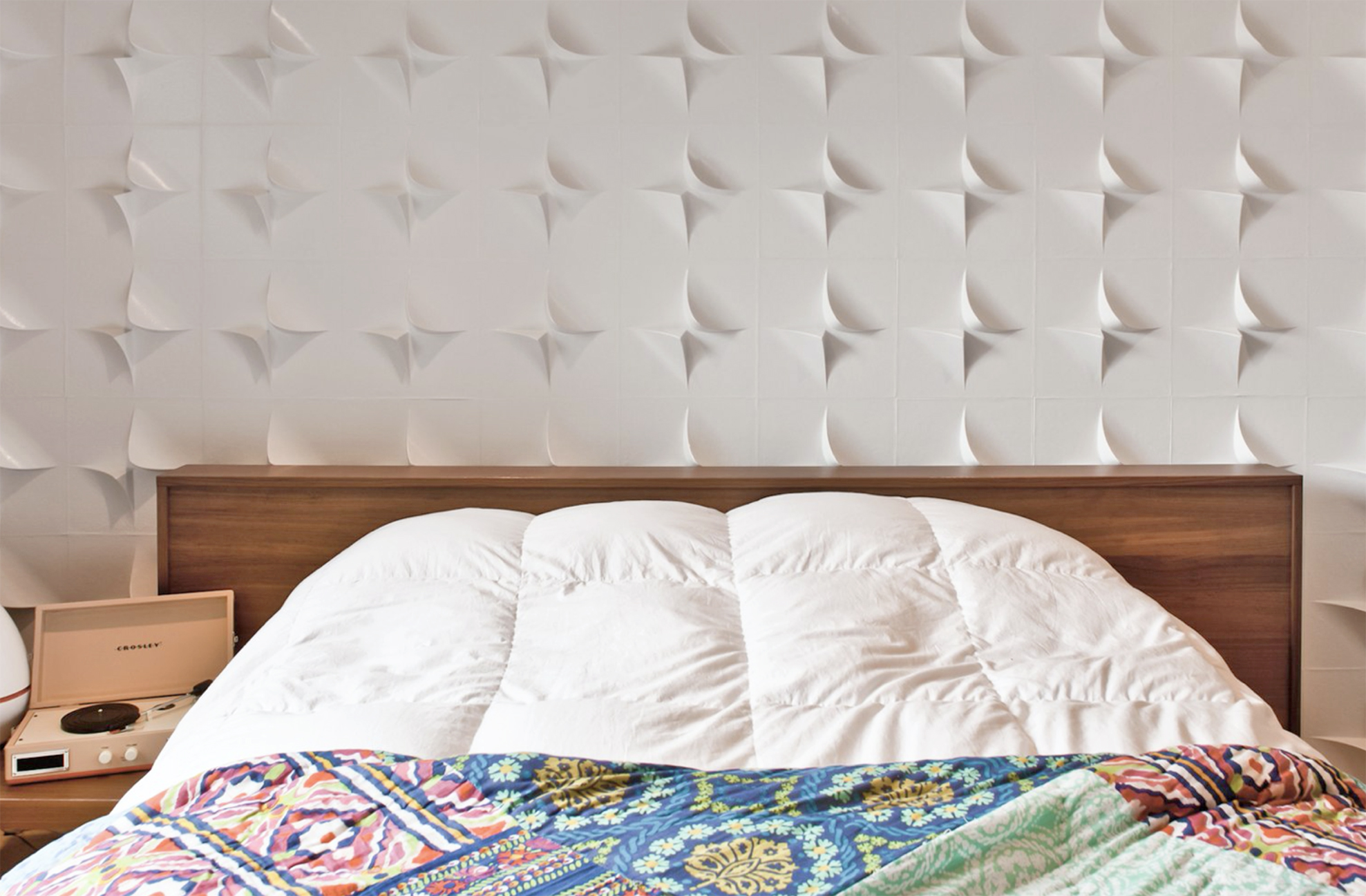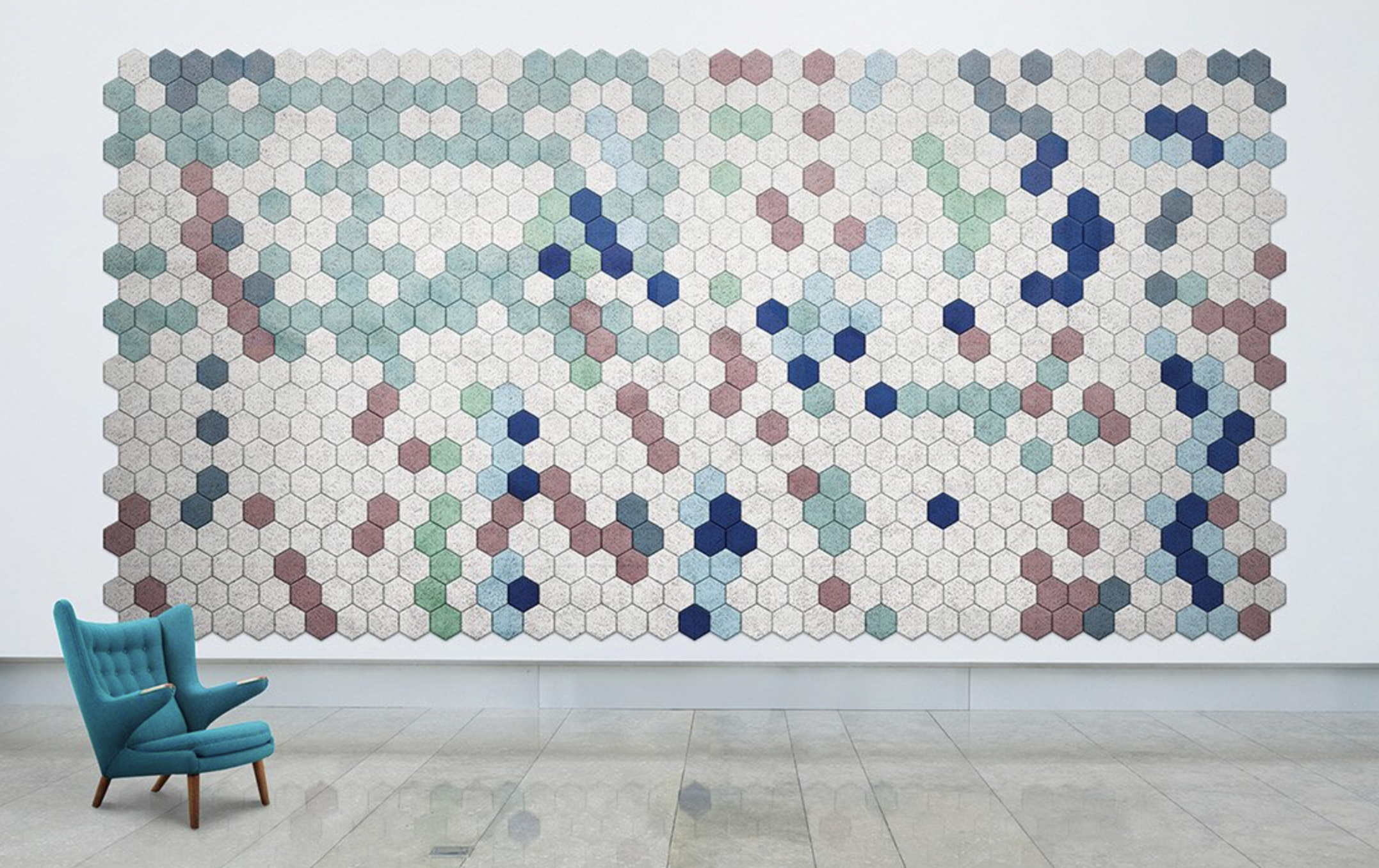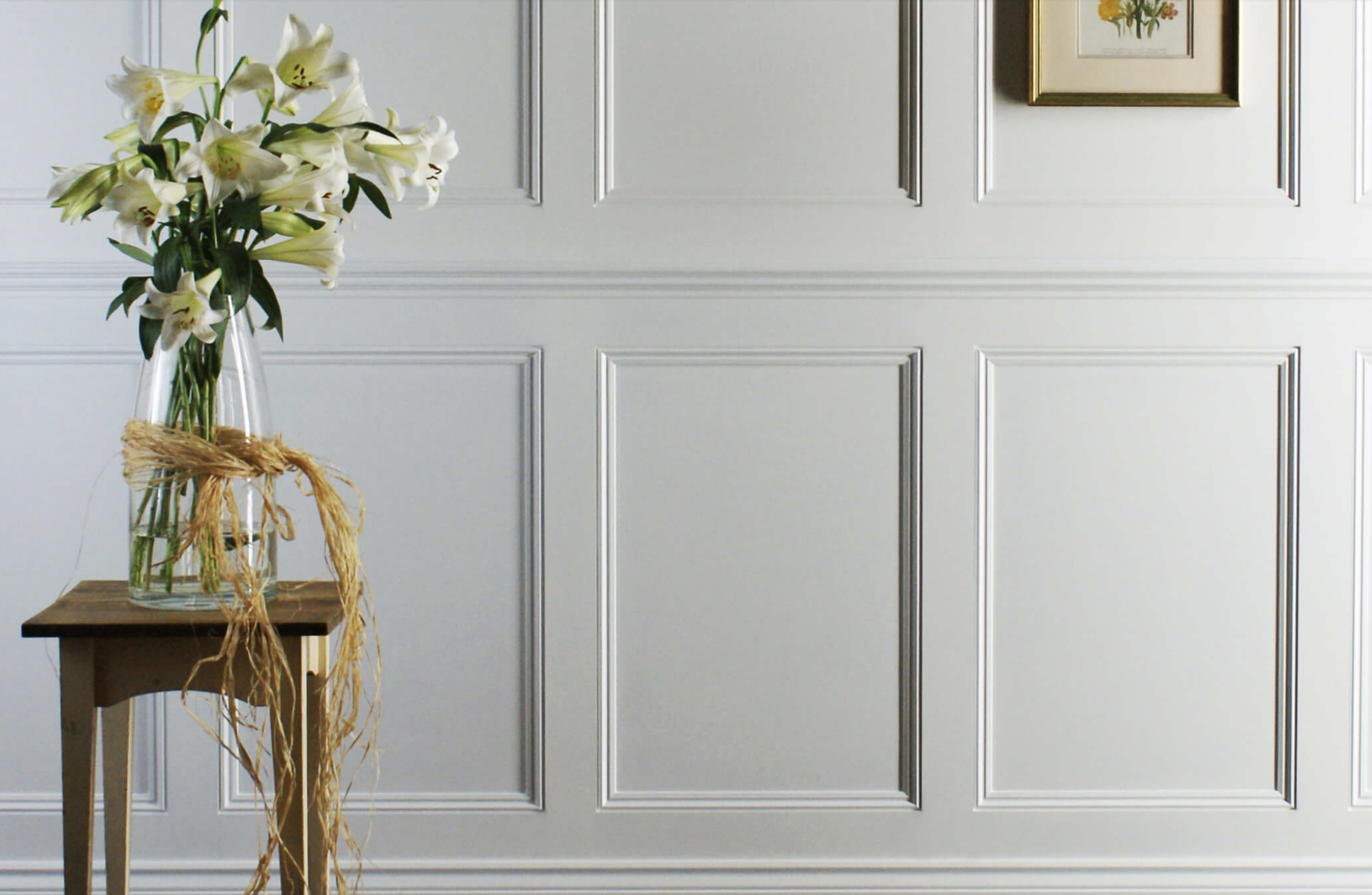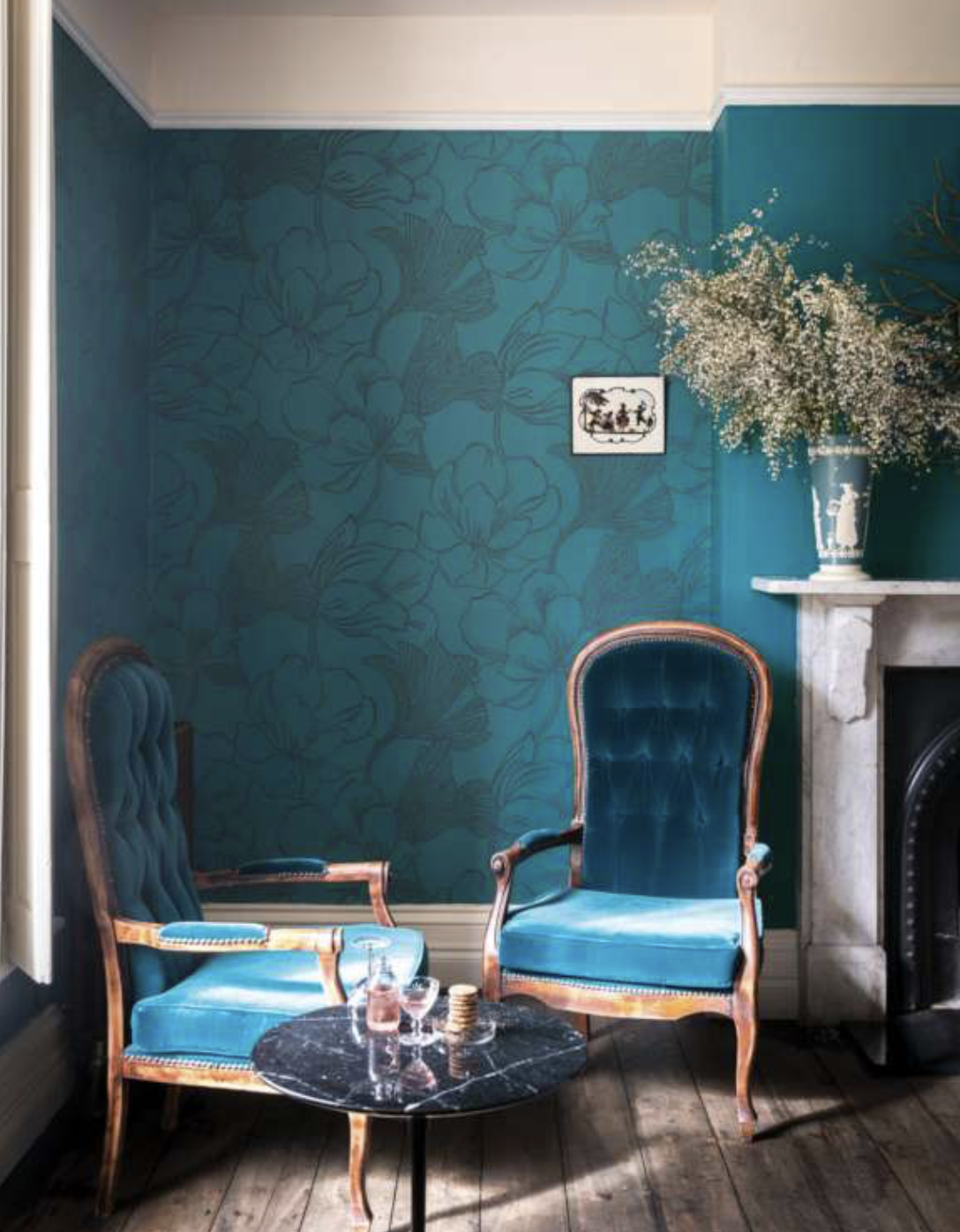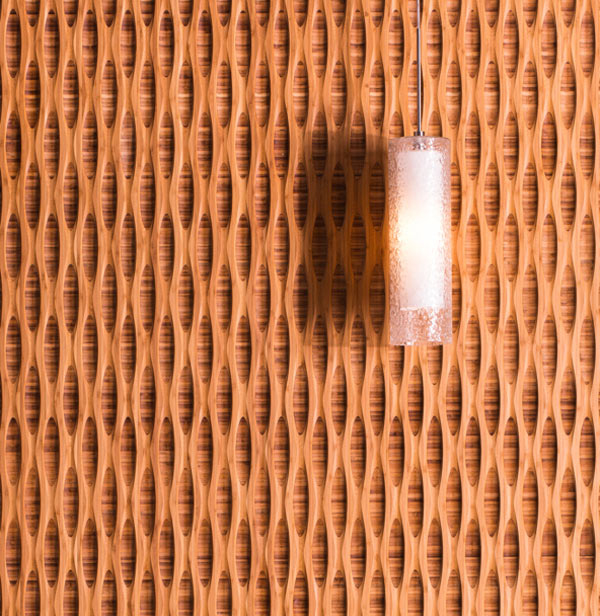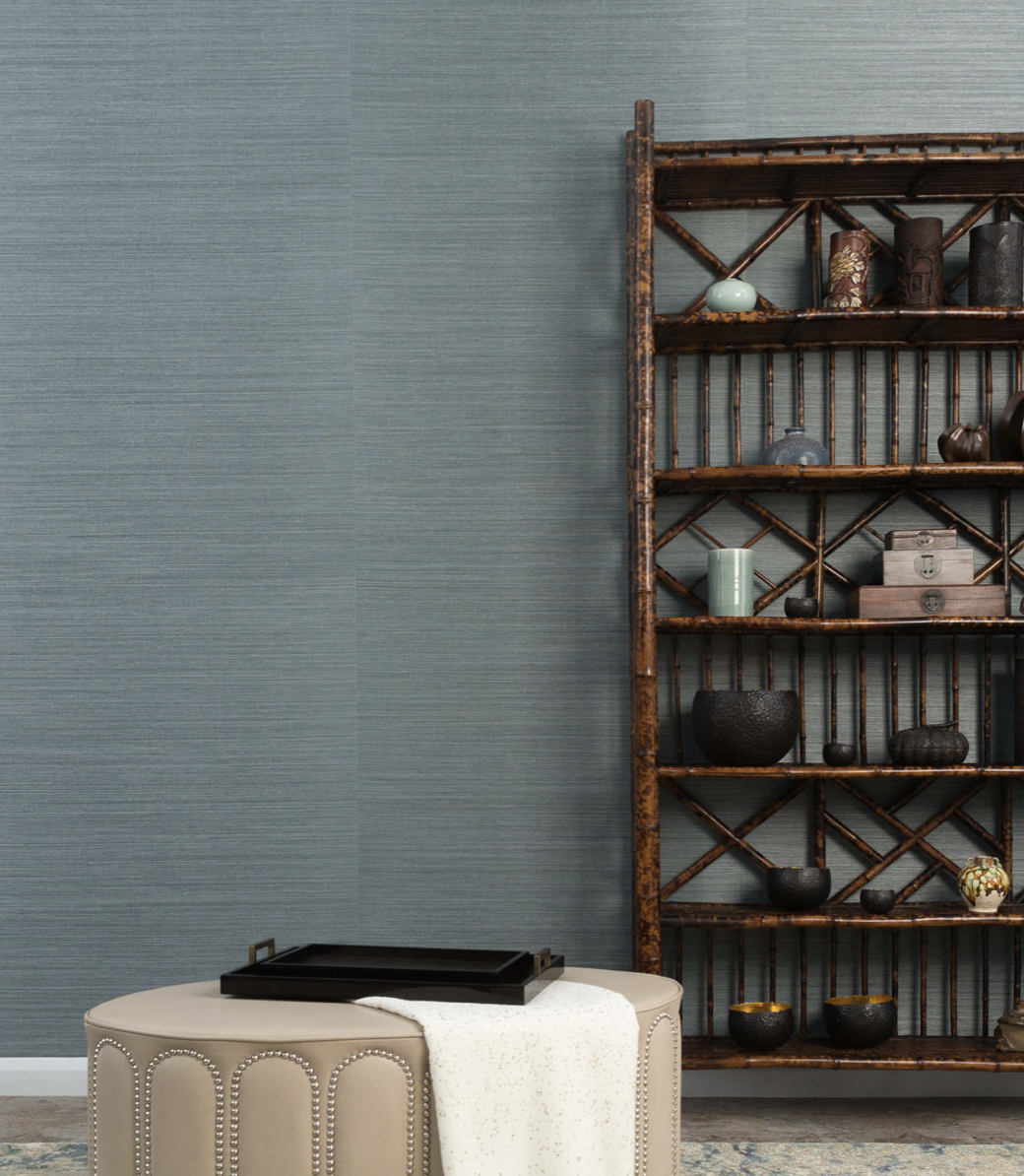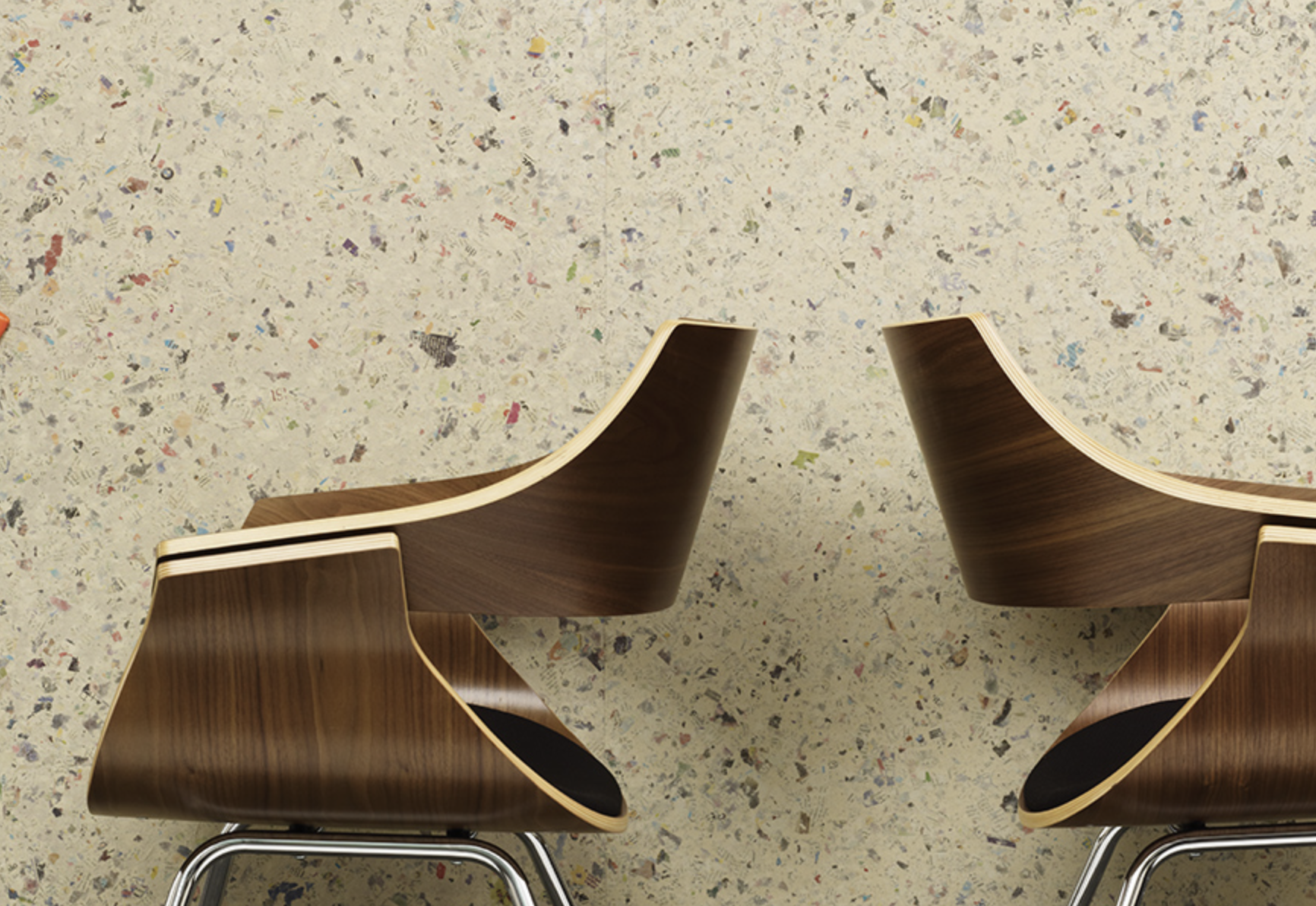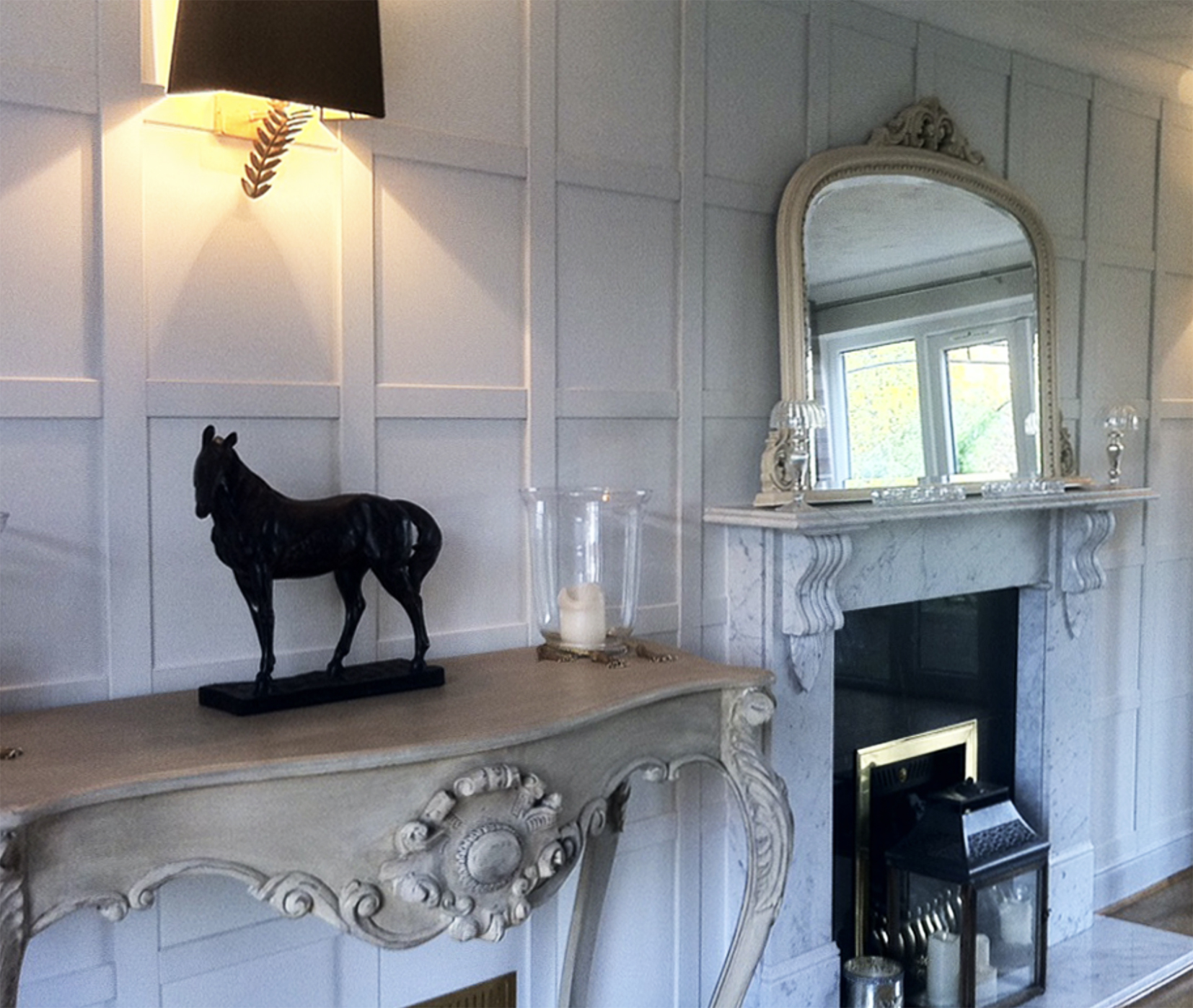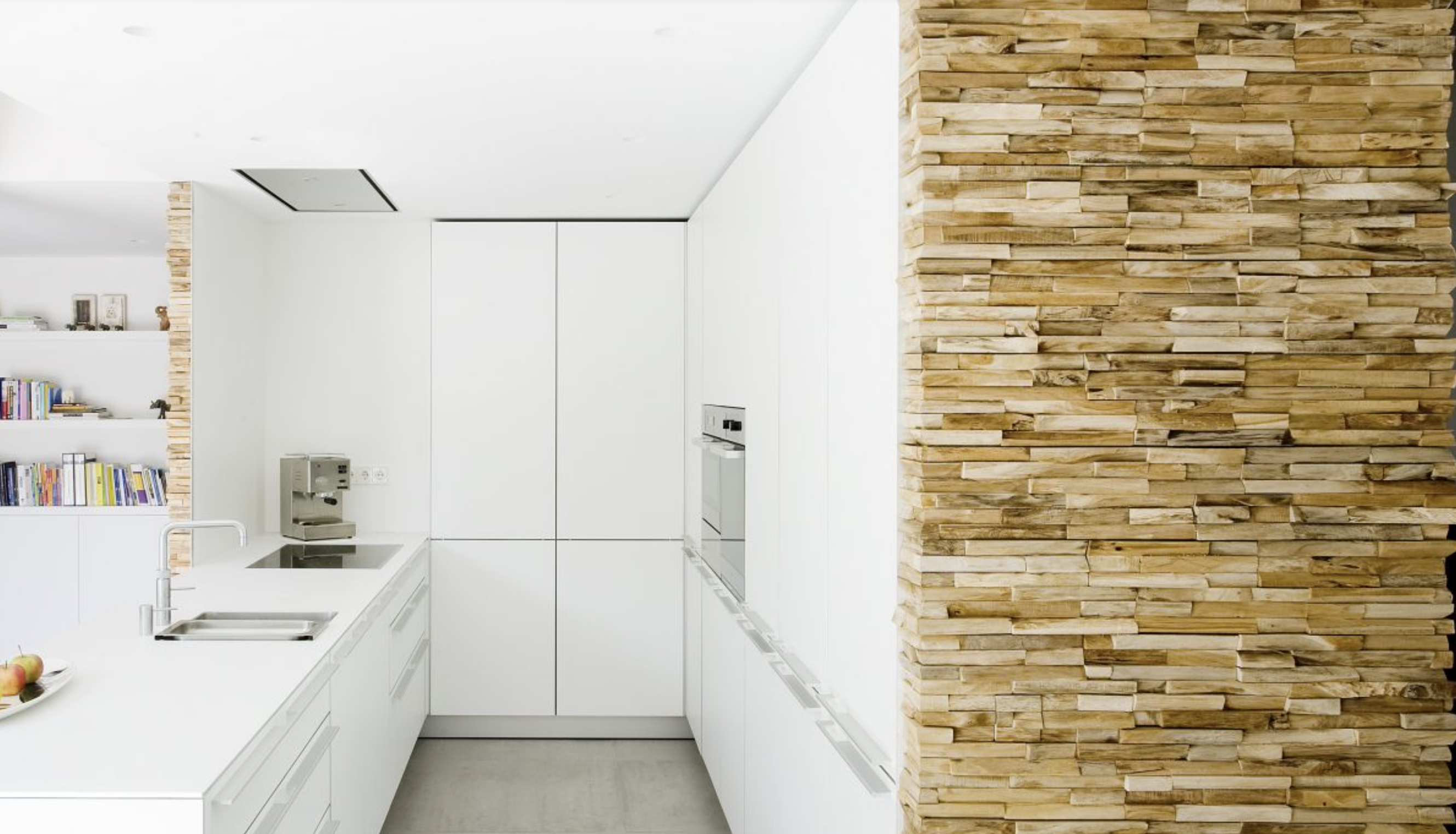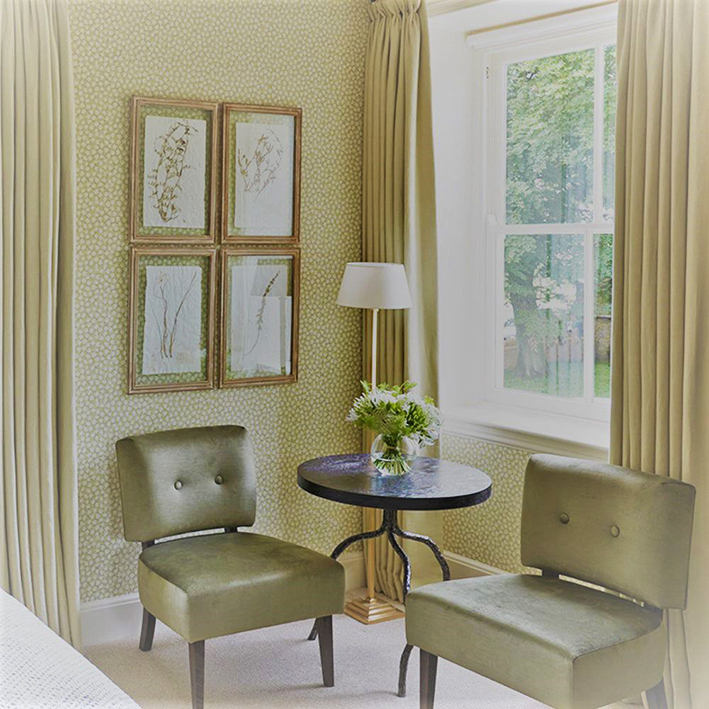Eco friendly wall coverings
How environmentally friendly is wallpaper? If 'not very' is the answer...which it is.. what products can be used to make our walls green and interesting company? Kay Hill investigates
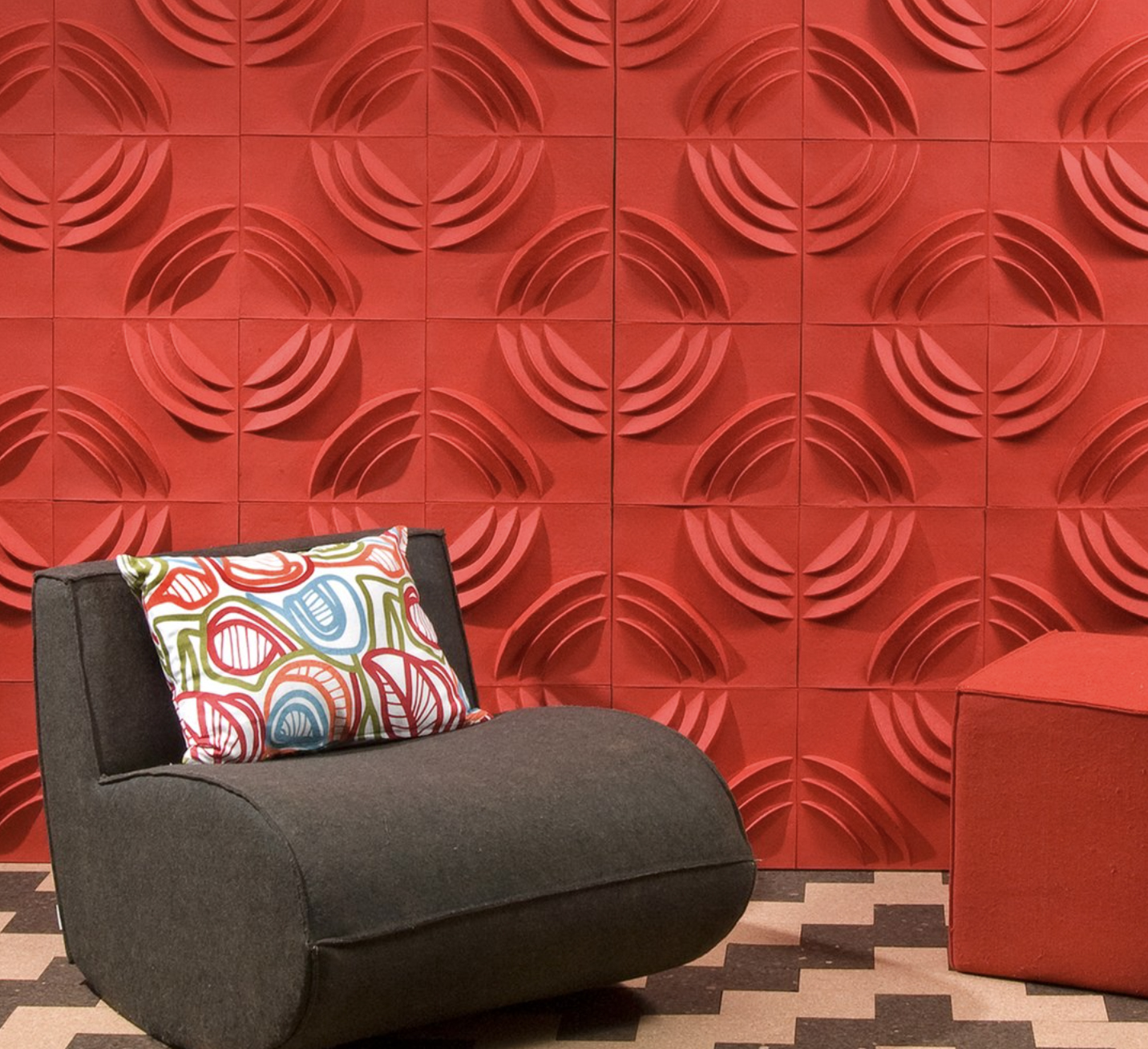
It may come as a blow to find that many wallpapers are neither compostable nor recyclable. So if you want it, be sure you really really want it and are prepared to live with it for years. But there are interesting eco surface coverings coming on stream, such as recyclable 3D tiles and panels, which are easy to apply and can be painted. Pictured above: Ripple PlasticForms decorative modular wallpaper, made from recyled PET by innovative US eco brand Mio Culture. Approx £45 for 12 + shipping.
According to the British Coatings Federation wallpaper sales are continuing to grow, as they have been for the past few years. Well, lockdown did present many of us with time to get to grips with some of the more difficult DIY tasks ..such as learning to hang wallpaper.
Wallpaper fell massively out of favour post war, being associated with horrible textures or tight overbearing floral repeats, and it remained a no-no until the 21st century really, when designers made it cool again. Looser repeats, far more subtle colourways, contemporary design, abstract design..there are many beautiful papers to choose from. But from an environmental point of view, is wallpaper harmless biodegradable nothing-nasty-to-worry about paper? A lot of us labour under the illusion that it is, but many products on sale are non-woven, which means they're coated with vinyl. This makes them problematic because they aren't recyclable, so will ultimately end up in landfill.
First the good news - wallpaper isn’t the health hazard it once was. Napoleon is believed to have died after being poisoned by his wallpaper while in exile on St Helena, as bacteria living in the flour-and-water paper paste reacted with arsenic in the ink to create poisonous gas. And before the late 1970s, vinyl papers contained asbestos, putting at risk of mesothelioma those who cut it regularly. Thankfully these days any health risks are minimal.
If you look closely at labels you’ll notice many products are actually called “wallcovering”, for the very good reason that there is a lot in them besides paper.
The most common type, vinyl paper, is synthetic and paper fibres pressed or blended together with an acrylic coating, a plastic derived from petrochemicals. This coating makes the product resistant to moisture, easy to hang and makes removal easier as it will peel off in complete strips. Acrylic 'papers' may also be fabric backed – with either a proper woven fabric, or a non-woven textile made from pulped cellulose (non woven papers are considered higher quality).
For the consumer, acrylic paper is easy to work with and more durable than non-plasticised papers; but the coating means it can’t be recycled and it doesn’t biodegrade. It also contains carcinogenic vinyl chloride and sometimes formaldehyde, although manufacturers claim that these cannot be released into the atmosphere so are not a health risk.
So what's good for the walls?
There are plenty of options that are kinder to the environment than vinyl-coated wallpapers.
Recycled PET
Recycled PET is being used for ever more products, which is great news. Carpets, cushion covers, tableware, and now Philadelphia-based Mio Culture have switched from recycled paper to recycled PET for many of their wall coverings. If you like the idea of 3D, Mio Culture's PlasticForms are decorative modular wallpaper tiles that can bring any wall come to life with dimension and pattern. Lightweight, durable and easy to install and clean, PlasticForms can be painted in whatever colour you'd like. Panels can installed temporarily with double-sided mounting tape or permanently with polyurethane construction adhesives. Tiles can be directly glued to drywall or mounted on canvas, plywood and other temporary backdrops. They're fun and funky and great for living rooms, bedrooms, waiting rooms, boardrooms, not to mention trade shows, stages and event decoration.
A straightforward paper wallpaper will be biodegradable, providing it doesn’t have artificial coatings on it. Bold & Noble has a wallpaper range with its designs screen-printed onto fibrous paper. It's not been officially-certified by any organisation but the company that makes it asserts it can be composted. The same for UK brand Paperboy - they say their papers are recyclable. Both of the latter use non plasticised paper and non toxic water-based inks.
Eco-conscious British textile designer Vanessa Arbuthnott has expanded her wall covering collection and offers products traditionally printed in the north of England using water-based inks on FSC-certified paper with a non-woven backing. While not compostable, her papers have no acrylic coating and can be recycled as paper. (Note, use an eco-friendly wallpaper paste such as Eco from German natural paint company Auro.)
For beautiful and very eco wallpapers, try Los Angeles-based Madison & Grow - which will ship to the UK. Its pretty papers are coated with clay and are hand screen-printed using non toxic water-based inks - and the resulting papers can be composted or recycled as paper at the end of what should be a long life.
If you're going to use wallpaper, choose a pattern you can live with for years. And many niche designer brands do use FSC or PEFC-certified papers and water-based, non-toxic inks, so the materials themselves are pretty eco-friendly even if not all products are recyclable due to their backings. London-based Knowles & Christou have lovely delicate designs on neutal colourways and the repeats aren't regimented, which makes them very easy to live with because they draw the eye but don't become repetitious. They are hand-printed in Wales on heavy paper, using water-based inks. Again, they're not certified as being compostable but the company says they'd do no harm in a compost heap or you could recycle as paper. Cost: around £150 a roll.
Woven and recycled papers, and natural grass wall coverings
As well as flat papers, woven paper can also be used for wallpaper, such as German company Weitzner’s Shifu paper or woven papers from London's Urbane Living.
Recycled paper is even better, if you can find it
Weitzner uses recycled newspapers to make its fabulous Newsworthy paper, made from strips of old newspapers woven onto a paper backing, while recycled maps get the same treatment in Around the World.
Natural grasses have long been woven to form wall coverings, such as grasscloth, and you can find excellent products at high-end Altfield in London's Chelsea Harbour Design Centre, and at Urbane Living, which has papers made from paper made from sisal grass, bark, jute, seagrass and arrowroot.
Urbane Living MD Adam Robertson: 'We look at products holistically; we focus on using natural sustainable materials but also at how it supports local economies. A lot of our products are made in developing countries, supporting traditional skills and providing employment in places such as Uganda.'
Acoustic properties
If you want interesting wall coverings that also dampen sound, then check out the acoustic wallpapers from Australia's Woven Image, which makes its products using 60 per cent recycled PET and 40 per cent virgin PET - which of course equals a fully recyclable product. Lots of modern designs, from funky to subtle.
Sweden's Baux makes acoustic tiles using waste wood bound with cement. Tiles come in various shapes, configure as you will, covering as much of a wall as you want.
Wood
Wood can be used in numerous ways, such as wood panelling. If you think that latter would be too expensive, you'll be surprised by the affordability, good looks and how easy it is to fit and paint the ready-made MDF panelling of Kent-based finepanel. It's made from Medite FSC-certified MDF, made with 70 per cent wood from Medite’s own forest. People tend to use it to dado rail height in hallways or dining rooms for a look that's classic yet contemporary, and it's a great choice if you have walls that aren't in perfect nick as it hides imperfections.
If using solid wood panelling, the greenest option would be reclaimed timber if possible, such as the stunning panels of salvaged wood made by Wonderwall Studios. Lots of patterns, types of reclaimed timber. Amazing stuff.
Fabric and wall decals
We don't see fabric-clad walls much these days, but a skilled decorator can stretch almost any hardwearing fabric over battening to create a bespoke finish – you could specify an organic cotton or hemp, for example. Alternatively, plain canvas (a fabric made from biodegradable and natural cotton, linen or hemp) or cotton hopsack can be used as the backdrop for ready-made decorative wall panels from companies such as Surface View, which digitally prints images onto a variety of materials including fabric and sustainable birch ply.
Tom Pickford at Surface View says its wall hangings and canvases use friendlier inks such as UV and water-based inks, 'the majority of which are certified to the Nordic Swan Environmental Standard. We've worked with suppliers and partners to explore new greener options such as printing with water-based dyes which are harmless, odour free and produce no VOCs.'
Polyester fabrics, such as those used by US company Pop&Lolli for its fun, family wallpapers and wall decals, are not biodegradable, but do offer extreme longevity as well as recyclability.
In fact, wall decals or stickers are proving increasingly popular because they're getting more attractive and innovative in terms of design, they're easy to use and don't have to be a permanent fixture in your home.
Sugar cane
It might seem like an unlikely source of wallpaper, but Dutch company Wall Art has found a way to transform bagasse, the fibrous waste product left when cane is turned into sugar, into modern wall panels. Not only are the contemporary 3D tiles made entirely of a waste product, but they are compostable.
Unusual textures and finishes
Companies are doing exciting things with recycled glass and even recycled polystyrene. At Italian company Trend, for example, its Feel wallpaper is made from tiny squares of mosaic glass, made from 78 per cent post-consumer recycled content, mainly from glass bottles. Back at Urbane Living, its Granite wallpaper is not made from stone, but finely shredded and coloured recycled polystyrene.
And given the right conditions, acrylic wallcoverings can be recycled, but very few companies are doing so. One of the firms doing so is Trove in New York, with its Redeux wallcovering. The breathable, washable wallcovering contains 31 per cent post-consumer recycled materials, is free from plasticisers, phthalates, formaldehyde, chlorine, halogens, and heavy metals, and is printed with water-based inks and adhesives. Trove, which ships to the UK, will also collect Redeux waste from its US customers for reuse and recycling.
So, perhaps the time has come to turn away from vinyl papers and ideally choose wall coverings that won't end up in landfill.
